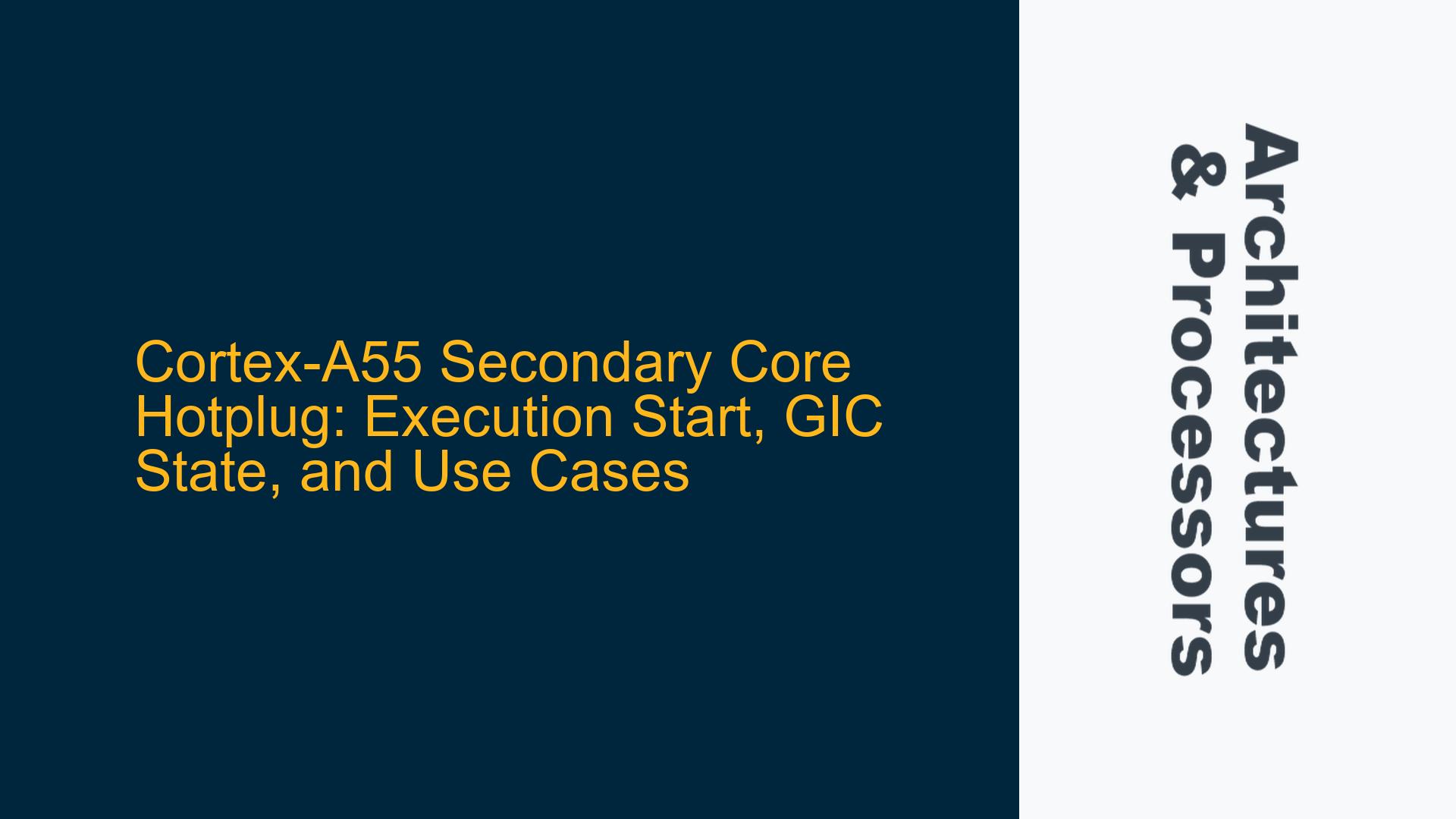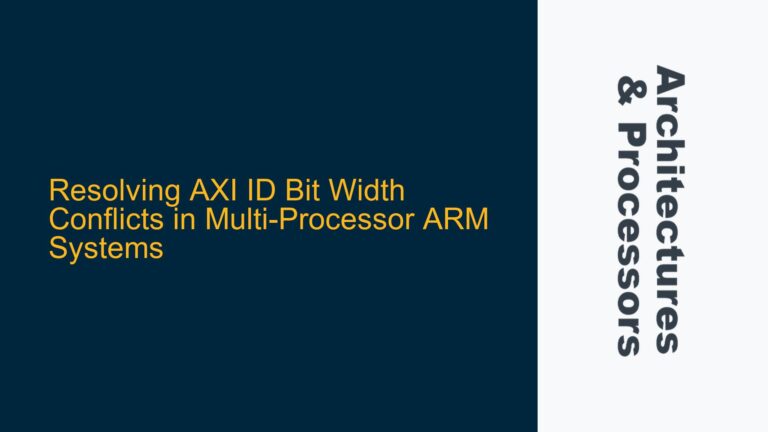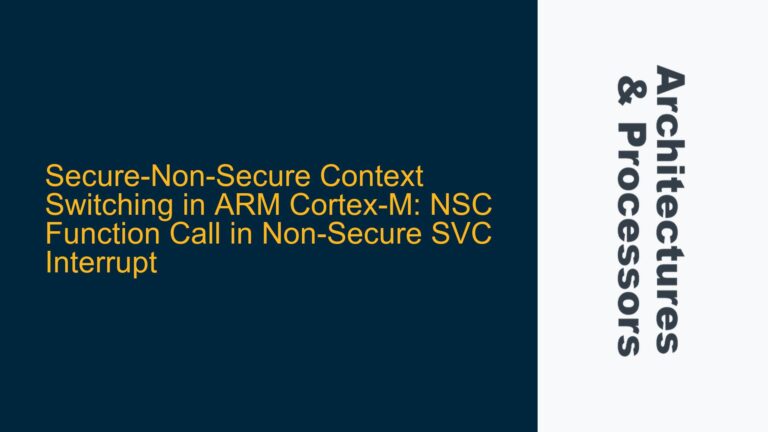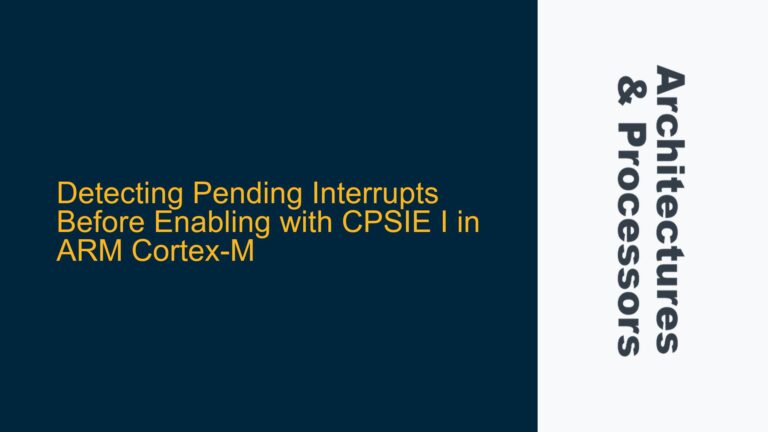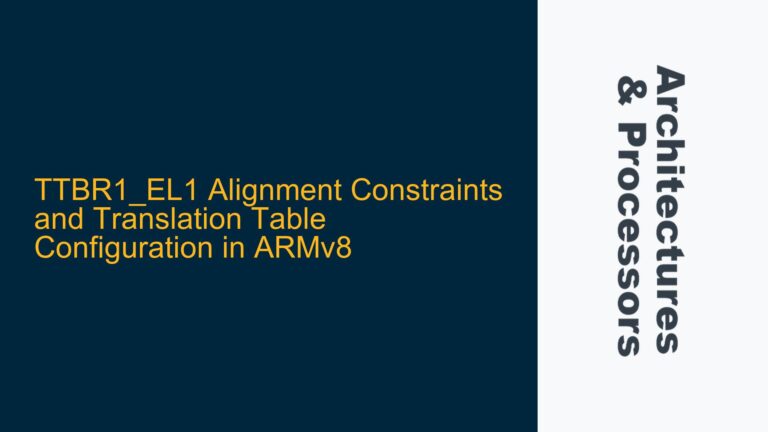Cortex-A55 Secondary Core Hotplug Execution Start Point
When a secondary core in a Cortex-A55-based system is hotplugged, the execution start point is determined by the system’s firmware and bootloader implementation. Typically, the secondary core begins execution at the reset vector defined in the system’s memory map. This reset vector is often configured during the initialization of the primary core and is shared across all cores in the cluster. The reset vector points to a specific address in memory where the secondary core’s initial boot code resides. This boot code is responsible for setting up the core’s execution environment, including initializing the stack pointer, enabling caches, and configuring the core’s local memory.
The Cortex-A55 architecture supports a feature called "warm reset," which allows the secondary core to start execution without going through a full cold reset. During a warm reset, the core’s architectural state is reset, but certain system registers and caches may retain their previous state. This is particularly useful in hotplug scenarios where the goal is to minimize the latency associated with bringing a core online. The exact behavior of the warm reset is controlled by the system’s power management firmware, which coordinates the state transitions of the cores using the Arm Power State Coordination Interface (PSCI).
In a typical hotplug scenario, the primary core initiates the hotplug process by sending a PSCI CPU_ON request to the secondary core. This request includes the entry point address where the secondary core should start execution. The entry point address is usually the same as the reset vector, but it can be customized depending on the system’s requirements. Once the secondary core receives the CPU_ON request, it begins execution at the specified entry point, initializes its local environment, and joins the rest of the cores in executing the system’s workload.
Peripheral Register State and GIC Reset Behavior During Hotplug
The behavior of peripheral registers, including those in the Generic Interrupt Controller (GIC), during a Cortex-A55 secondary core hotplug depends on the system’s power management implementation and the specific hotplug mechanism used. In most cases, the GIC registers associated with the secondary core are not reset during a hotplug operation. Instead, they retain their previous state, which allows the core to resume handling interrupts without requiring a full reinitialization of the GIC.
The GIC architecture supports core-specific interrupt configuration, which means that each core has its own set of registers for managing interrupts. When a secondary core is hotplugged, the GIC registers for that core are typically left unchanged, allowing the core to continue handling interrupts as it did before being unplugged. However, the system’s firmware may choose to reconfigure the GIC registers for the secondary core during the hotplug process to ensure that the core’s interrupt handling behavior aligns with the system’s current requirements.
In some cases, the system may implement a partial reset of the GIC registers during a hotplug operation. This partial reset is usually limited to the core-specific registers and does not affect the global GIC configuration. The goal of this partial reset is to ensure that the secondary core starts with a clean slate for interrupt handling while minimizing the impact on the rest of the system. The exact behavior of the GIC registers during a hotplug operation is controlled by the system’s power management firmware and can vary depending on the specific implementation.
Hotplug Use Cases and System Requirements
Hotplugging secondary cores in a Cortex-A55-based system is a common technique used to optimize power consumption and performance. The ability to dynamically add or remove cores from the system allows the operating system to scale the system’s processing capacity based on the current workload. This is particularly useful in mobile and embedded systems where power efficiency is a critical concern.
One common use case for hotplugging is in systems that implement dynamic voltage and frequency scaling (DVFS). In these systems, the operating system can reduce the number of active cores during periods of low workload to save power. When the workload increases, the operating system can hotplug additional cores to provide the necessary processing capacity. This dynamic scaling of the system’s processing resources allows the system to achieve a balance between performance and power consumption.
Another use case for hotplugging is in systems that implement heterogeneous multi-processing (HMP). In HMP systems, the operating system can migrate tasks between different types of cores to optimize performance and power consumption. For example, the operating system can migrate a task from a high-performance core to a power-efficient core when the task’s processing requirements decrease. Hotplugging allows the operating system to dynamically adjust the number of active cores in each cluster to match the system’s workload.
Hotplugging is also used in systems that implement fault tolerance and reliability features. In these systems, the operating system can hotplug a spare core to replace a faulty core, ensuring that the system continues to operate even in the presence of hardware failures. This capability is particularly important in safety-critical systems where system availability is a key requirement.
The decision to hotplug a secondary core is typically made by the operating system based on the system’s workload and power management policies. The operating system uses the PSCI interface to communicate with the system’s power management firmware and coordinate the hotplug process. The PSCI interface provides a standardized way for the operating system to control the power state of the cores, including the ability to hotplug secondary cores.
Troubleshooting Cortex-A55 Secondary Core Hotplug Issues
When troubleshooting Cortex-A55 secondary core hotplug issues, it is important to consider the system’s firmware implementation, the behavior of the GIC registers, and the operating system’s power management policies. The following steps can help identify and resolve common issues related to secondary core hotplugging.
First, verify that the system’s firmware is correctly implementing the PSCI interface and that the secondary core is receiving the CPU_ON request. This can be done by examining the firmware’s logs or using a debugger to trace the execution of the secondary core. If the secondary core is not receiving the CPU_ON request, the issue may be related to the firmware’s implementation of the PSCI interface or the system’s power management hardware.
Next, check the state of the GIC registers for the secondary core to ensure that they are correctly configured for interrupt handling. If the GIC registers are not configured correctly, the secondary core may not be able to handle interrupts, which can prevent it from joining the rest of the cores in executing the system’s workload. This can be done by examining the GIC registers using a debugger or by using the system’s firmware to dump the GIC register state.
Finally, review the operating system’s power management policies to ensure that they are correctly configured for hotplugging. The operating system’s policies should be aligned with the system’s workload and power consumption requirements. If the operating system is not correctly configured, it may not be able to effectively manage the hotplugging of secondary cores, which can lead to performance and power efficiency issues.
In conclusion, Cortex-A55 secondary core hotplugging is a powerful technique for optimizing power consumption and performance in multi-core systems. By understanding the execution start point, GIC register behavior, and use cases for hotplugging, system designers can effectively implement and troubleshoot hotplugging in their Cortex-A55-based systems.
